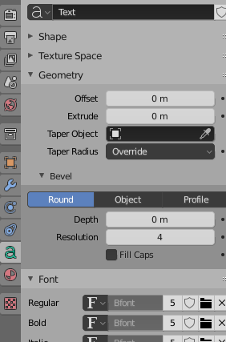
In Edit Mode the same is also true, Z points along the up/down axis, text lies (remain) flat. In similar fashion it’s also possible to use Modifiers, for example, assigning the Solid modifier, its Thickness value can be set to a positive (down) or negative (up) number that extrudes the shape much like it does as a Geometry setting in Object Data Properties, with the added benefit that different modifiers can be stacked (assigned to the curve), each influencing the object in a particular way to shape the outcome.Īn alternative way to change imported curves is to assign a Modifier, in this instance Solidify that can similarly ‘extrude’ or ‘solidify’ the Bezier structure along the local Z axis – negative (up), and positive (down).īeziers and Curves generally import as objects aligned to Blenders primary axis, Z up/down, laying flat on their backs (Top view – NumPad 7 – looks down on the text). 250 KB – *.blend).ĭesign note: altering Beziers by changing various Object Data Properties settings is a non-destructive process once a change has been made if can be reverted (so long as the object remains a Bezier or Curve object).

Important: using complex fonts to generate text tends to increase the likelihood curves will need some clean up and optimisation after import, deformation and inconsistencies due to the way vertices are positioned to describe the letters.

Once imported as Bezier curves, text can then be cleaned up and optimised by reducing it’s overt complexity before than conversion to mesh objects ready for use. For this to work the text needs to be exportable as line-art rather than bitmaps or actual text using fonts that may not be available to Blender, and to the supported Scalable Vector Graphics format ( *.SVG). In this exercise we take a look at importing some custom text into Blender created in an external image application.


 0 kommentar(er)
0 kommentar(er)
